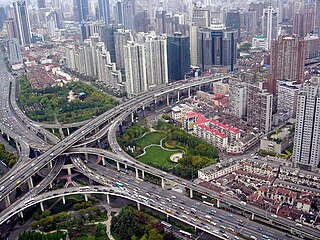
Civil engineering is a professional engineering discipline that deals with the design, construction, and maintenance of the physical and naturally built environment, including public works such as roads, bridges, canals, dams, airports, sewerage systems, pipelines, structural components of buildings, and railways.

École des Ponts ParisTech is a university-level institution of higher education and research in the field of science, engineering and technology. Founded in 1747 by Daniel-Charles Trudaine, it is one of the oldest and one of the most prestigious French Grandes Écoles.
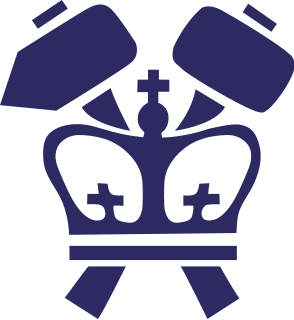
The Fu Foundation School of Engineering and Applied Science is the engineering and applied science school of Columbia University. It was founded as the School of Mines in 1863 and then the School of Mines, Engineering and Chemistry before becoming the School of Engineering and Applied Science. On October 1, 1997, the school was renamed in honor of Chinese businessman Z.Y. Fu, who had donated $26 million to the school.
Applied mechanics is a branch of the physical sciences and the practical application of mechanics. Pure mechanics describes the response of bodies or systems of bodies to external behavior of a body, in either a beginning state of rest or of motion, subjected to the action of forces. Applied mechanics, bridges the gap between physical theory and its application to technology. It is used in many fields of engineering, especially mechanical engineering and civil engineering; in this context, it is commonly referred to as engineering mechanics. Much of modern applied or engineering mechanics is based on Isaac Newton's laws of motion while the modern practice of their application can be traced back to Stephen Timoshenko, who is said to be the father of modern engineering mechanics.
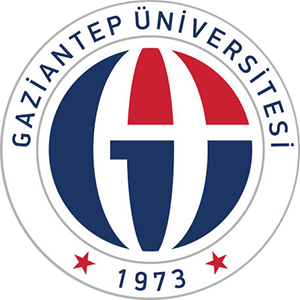
Gaziantep University is a public university in Gaziantep, Turkey. Gaziantep University has 10 faculties, containing a total of 22 academic departments, with a strong emphasis on scientific and technological research.
The Engineering Campus is the colloquial name for the portions of campus surrounding the Bardeen Quadrangle and the Beckman Quadrangle at the College of Engineering at the University of Illinois at Urbana–Champaign. It is an area of approximately 30 square blocks, roughly bounded by Green Street on the south, Wright Street on the west, University Avenue on the north, and Gregory Street on the east.

Khajeh Nasir Toosi University of Technology (KNTU), also known as K. N. Toosi University of Technology, is a public university in Tehran, Iran, named after medieval Persian scholar Khajeh Nasir Toosi. The university is considered one of the most prestigious, government-sponsored institutions of higher education in Iran. Acceptance to the university is highly competitive and entrance to all undergraduate and graduate programs requires scoring among the top 1% of students in the Iranian University Entrance Exam, also known as "Konkoor", which comes from a simile French word "concours", meaning competition.

United International University (UIU) is a private university located in Dhaka, Bangladesh.
The College of Engineering and Applied Science is the engineering and applied science college of the University of Cincinnati in Cincinnati, Ohio. It is the birthplace of the cooperative education (co-op) program and still holds the largest public mandatory cooperative education program at a public university in the United States. Today, it has a student population of around 4,898 undergraduate and 1,305 graduate students and is recognized annually as one of the top 100 engineering colleges in the US, ranking 83rd in 2020.
Seeley Greenleaf Mudd, M.D. was an American physician, professor, and major philanthropist to academic institutions.
The School of Engineering (SoE) at Rutgers, The State University of New Jersey, was founded in 1914 as the College of Engineering. It was originally a part of the Rutgers Scientific School, which was founded in 1864. The school has seven academic departments, with a combined undergraduate student enrollment of over 2,400 students. It offers over 25 academic and professional degree programs. These include several interdisciplinary programs, such as Environmental Engineering with the Department of Environmental Science, and the graduate program in Mechanics.

The College of Engineering at Michigan State University (MSU) is made up of 9 departments with 168 faculty members, over 6,000 undergraduate students, 10 undergraduate B.S. degree programs and a wide spectrum of graduate programs in both M.S. and Ph.D. levels. Each department offers at least one degree program, however many include more than one degree, multi-disciplinary programs, certifications and specialties as well as other degree programs affiliated with other colleges at Michigan State University.
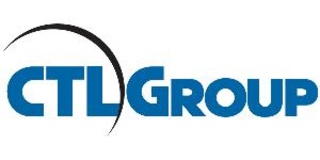
CTLGroup is a consulting engineering and materials science firm that provides engineering, testing and scientific services in the following markets: Building & Facilities; Emergent Solutions; Energy & Resources; Litigation & Insurance; Materials & Products; and Transportation. Its staff includes professionals from the fields of civil, structural, mechanical engineering, architecture, geology, chemistry, ceramics and materials science. Serving clients from around the globe, CTLGroup maintains corporate offices and laboratories in Chicago and Doha, State of Qatar and consulting offices in Austin, TX; Bradenton, FL; and Washington, DC. Services for clients in New York and North Carolina are provided through CTL Engineers & Construction Technology Consultants.
Robert H. Dodds Jr. Ph.D. is a professor in the Civil and Environmental Engineering Department at the University of Illinois Urbana-Champaign. He specializes in the field of structural engineering with a focus on non linear fracture mechanics of structural materials. He has done extensive research for the fields of fracture mechanics, fatigue, and engineering software development.
Jacob Fish is a researcher and professor in computational mechanics. He was the Rosalind and John J. Redfern, Jr. Chaired Professor of Mechanical and Aeronautical Engineering at Rensselaer Polytechnic Institute and director of RPI's Multiscale Science and Engineering Center. He is currently the Robert A. W. and Christine S. Carleton Professor in Civil Engineering at Columbia University.

CSIR-Structural Engineering Research Centre (CSIR-SERC), Chennai is one of the 39 constituent laboratories of the Council of Scientific and Industrial Research in India. The institute is a certified ISO:9001 quality institute.

The École nationale supérieure de l'énergie, l'eau et l'environnement(Ense3) is one of the engineering schools of the Institut National Polytechnique de Grenoble. As a grande école, students are admitted through a nationwide competitive examination. It was formed by the merger of the École nationale supérieure d'hydraulique et de mécanique de Grenoble (ENSHM) and the École nationale supérieure d'ingénieurs électriciens de Grenoble (ENSIEG).
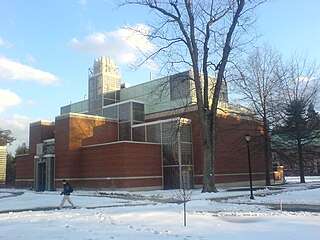
The Seeley G. Mudd Chemistry Building was a chemistry laboratory and classroom building on the campus of Vassar College in the town of Poughkeepsie, New York. The 42,000-square-foot (3,900 m2) postmodern building stood on the north end of a cluster of other science buildings on the site of the school's first chemistry laboratory. It was completed in 1984 at a cost of $7.2 million after the college received money from a fund bequeathed to it in the will of California cardiologist and professor Seeley G. Mudd. The structure replaced Sanders Hall of Chemistry and included elements designed to be energy efficient, notably a large wall of glass blocks that designers hoped would passively heat the building. Reviews of the structure were positive when it opened with critics praising the way its form complemented nearby older buildings. By 2015, many aspects of the building had been evaluated as being in Fair or Poor condition and the building was demolished in April 2016 as part of the Science Center project, later replaced with an open green space.
Daniel Inman is a Kelly Johnson Collegiate Professor and former Chair of the Department of Aerospace Engineering at the University of Michigan.













